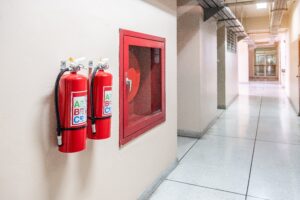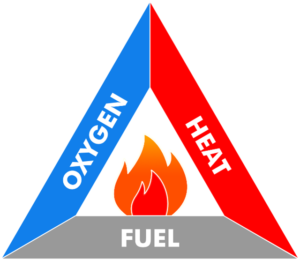
10 Tips for Fire Safety in Schools
This guide covers our Top 10 Tips for Fire Safety in Schools to ensure you haven’t missed off any of the really important, but easily overlooked facets of fire safety
Book your FREE, no-strings-attached Fire Safety Audit to ensure that you’re properly protected from the risk and comply with current fire safety legislation.
Get essential insights and updates
in fire safety – straight to your inbox!
One of the main problems facing fire detection systems in the UK is exposed/external environments is the unpredictable British weather. Almost every detection system (Smoke, Heat, and even some Flame Detectors) can suffer from reduced effectiveness in varying weather conditions. Common issues can include smoke stratification, temperature fluctuations, and false alarms through direct sunlight on a detector lens.
One exception to this rule is Thermal Fire Detection. This system remains effective almost regardless of the weather conditions. This feature is particularly useful for waste management sites with substantial operations or storage space in open buildings or uncovered areas.

All particles produce a certain amount of infrared radiation, but as the heat rises, the concentration of radiation increases. The camera identifies this increase in radiation, reading it as a rise in heat levels. Operators can configure the fire system to activate the alarm when radiation reaches a certain threshold.
Despite the drawbacks listed above, Blazequel regards thermal fire detection as the most effective fire protection system for external environments, as it is reliable, adequate in most weather conditions, and allows you to achieve a pre-emptive alarm before a fire can even break out. Careful system design can largely overcome the ‘blind spot’ issue with wide-lens cameras or a scanning camera system.
For more information read more Fire Detection Thermal Camera. For inquiries and swift assistance contact us on 01234 357357 or email us at sales@dev.blazequel.com.

This guide covers our Top 10 Tips for Fire Safety in Schools to ensure you haven’t missed off any of the really important, but easily overlooked facets of fire safety

Fires are often unpredictable, destructive, and can cause massive loss of life. Understanding how fire works can help us prevent it, predict it, and control it. One of the most

Keep your festive season merry and bright with essential Christmas Fire Safety tips from Blazequel. From illuminating your home safely with holiday lights to ensuring your Christmas tree doesn’t become
Video Smoke Detection is perfect for a fast response to fires in high roofed buildings and harsh operating conditions.
Watch Smokecatcher detect smoke in an MSW storage building. The smoke is coming through from a fire in the adjoining storage area.
Watch Smokecatcher detect a fire in an SRF Storage bunker. Sadly, the alarm wasn’t responded to and the site lost a 4hr window of opportunity between smoke detection and flames appearing.
Video Smoke Detection overcomes the risks of stratification and other challenges for early fire detection in logistics and storage facilities.
Watch Fire Rover detect and suppress a fire in the waste bunker at an EFW facility!
See how the Fire Rover detects and suppresses this fire at a clients tipping hall. Note how the smok is spreading out at low leve, rather than rising. This is called ‘stratification’ and is one of the many reasons why roof-mounted smoke detection systems like beam detectors and HSSD is not suitable for many recycling applications.
Watch the Fire Rover detect and suppress a fire at a battery storage facility. This targeted and intellegent control makes the Fire Rover particularly well suited to high hazard storage applications.
Watch the Fire Rover tackle a battery fire in a tipping hall. Note how the exploding battery cells start three separate fires, which the operator individually suppresses (whilst avoiding the site operators in the vicinity).
Get essential insights and updates in fire safety – straight to your inbox!
